
Japan Family Holiday Itinerary
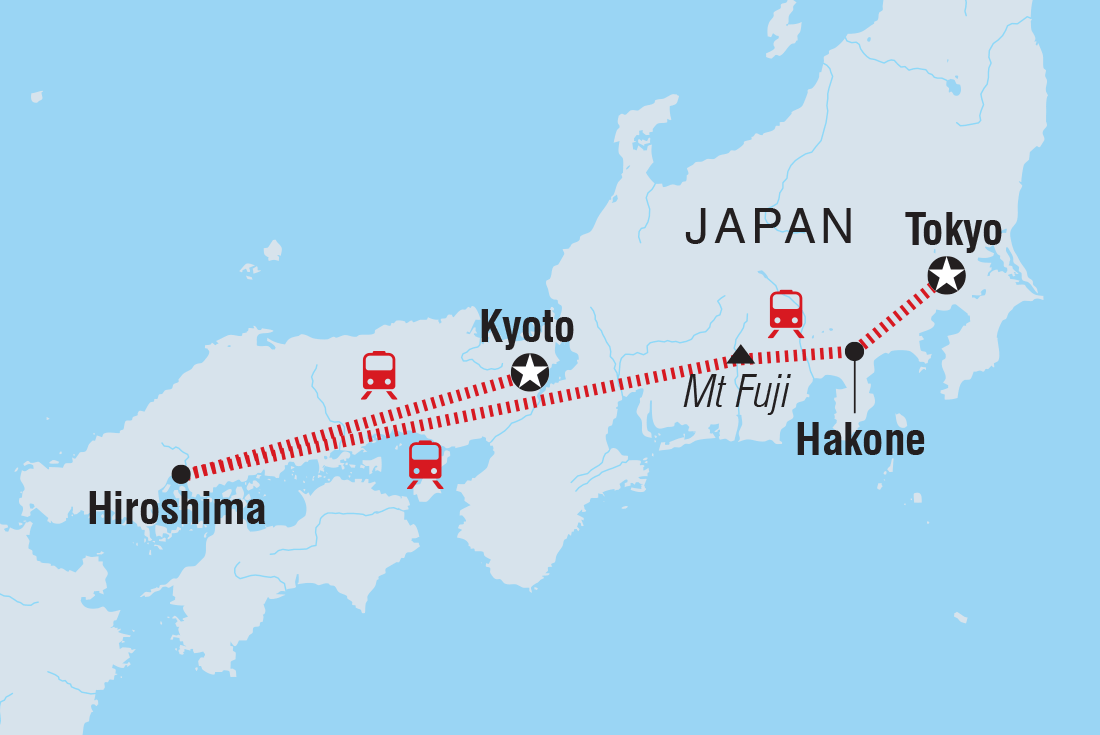


Konnichiwa! Welcome to Tokyo – Japan's modern capital steeped in ancient tradition. Your adventure begins with a welcome meeting at 5 pm in your hotel tonight, where you'll meet your local leader and the other families. If you arrive early, why not wander Tokyo at your own pace or take an Urban Adventures day tour? After your meeting, consider joining the group for an optional dinner at a local restaurant.
Kick things off with a visit to Sensoji in Asakusa – Tokyo's oldest Buddhist temple (about 1300 years old) set on the banks of the Sumida River. Nearby, you’ll discover a great shopping street where you can find a quirky Japanese souvenir or sample some traditional snacks. You’ll then have a free afternoon to find some lunch or maybe visit a manga (Japanese comic and cartoon) market in Akihabara. Enjoy free time in the afternoon. Tonight, head out for a dinner on a boat, cruising through the Tokyo Bay. Surrounded the sparkling lights of the city, you’ll enjoy monjayaki (a non-sweet pancake with a soft batter as base) cooked on a sizzling hot plate.
This morning, head to Shinjuku and take part in a traditional calligraphy lesson. You and the kids will learn how to write your name in Japanese (and maybe learn to say a few words, too) with the help of a local teacher. After, grab some lunch at a local restaurant with your group then visit Harajuku – a neighbourhood simultaneously known for its eccentric tribes and teen pop culture. Sample one of Harajuku’s famous crepes or try some of its 3D latte art as you explore the iconic Takeshita Street. Finish the afternoon in Shibuya, where you’ll have some free time to grab dinner or head back to the hotel.
Say goodbye to Tokyo and catch your first shinkansen bullet train of the trip to Hakone, travelling up to 285 km an hour! In Japan, trains operate with amazing precision and the sight of a white-gloved guard bowing to a carriage full of travellers is something the kids are sure to remember! Part of the Fuji-Hakone-Izu National Park, Hakone is a place of staggering natural beauty. Here, you can also soak in hot spring onsens, go on bush walks, chill out by the lakes, take in the views of Mt Fuji (if you’re blessed with good weather!), or explore an open-air modern art museum. Tonight, you’ll experience Japanese ryokan (traditional inn) hospitality – sleeping on futons in a tatami mat room, wearing yukata (a light kimono-style robe) and soaking up (literally) the onsen culture.
Today, you’ll take a ropeway (cable car) up to the top of Owakudani (Geothermal Valley) and hopefully catch views of Mt Fuji. Continue to Lake Ashinoko – a natural caldera formed after a major volcanic explosion some 3000 years ago – for a cruise aboard a pirate boat. Back on land, visit the Karakuri Secret Box Museum and try to open these beautifully hand-crafted boxes (or purchase a unique gift to take home). With your free afternoon, you might like to hike through the grasslands of Sengokuhara or pamper yourself at Hakone’s large hot spring theme park, which has an amazing variety of baths ranging from the traditional to cave baths and water slides!
Back on the bullet-train, you make the journey to the city of Hiroshima. A visit to Hiroshima is sobering, but the tragedy that happened here is an important part of history to confront. In the afternoon, visit the Genbaku (A-Bomb) Dome and the Peace Memorial Park and Museum, both of which stand as an emotional testament to the fateful day in August 1945 when Hiroshima became the first target for nuclear attack. The dome was just metres from where the bomb detonated and managed to retain its shape, eerily standing exactly how it was prior to the attack. These days it stands as both a symbolic reminder and a monument to peace. Tonight, you might like to seek out the savoury pancake okonomiyaki – also a signature Hiroshima dish with its own particular twist.
This morning, head for the island of Miyajima, just a short ferry ride across the Inland Sea. The island is home to the Shinto shrine of Itsukushima, famous for its huge bright orange gate (torii) which is a sight to see when the tide is high! Maybe take a stroll through Momiji Park (known as Maple Valley) or take the cable car up to the top of Mt Misen (keeping an eye out for the hungry deer that roam the island) for panoramic views of the Inland Sea and its many islands. Return to Hiroshima in the afternoon, and in your free time, maybe visit the five-storied Hiroshima Castle, which originally dates from the 1590s, though it was destroyed by the bomb and reconstructed after the war.
Jump aboard the bullet train to Kyoto this morning. On the way, stop at Himeji Castle – Japan's most impressive samurai castle. The building, which has survived earthquakes and war since the mid-16th century, was restored to its full glory in 2015 and is now a UNESCO World Heritage site. The moats, towers and walled alleyways were ingeniously designed to trick attackers! Explore the castle that was once home to over 10,000 samurai families and look out over the city below. Continue to Kyoto on the bullet train. While you're here, you'll see some of the finest temples, shrines, palaces and gardens in the country. In the afternoon, visit Nishiki-Koji Market in the heart of Kyoto’s downtown area to see what goes into Kyoto’s famed Kyo-ryori (Kyoto cuisine). Then, spend your evening wandering the Gion district, seeing if you can spot geiko (geisha) or maiko (apprentice geisha) dressed in elaborate kimonos and make-up on their way to events and functions.
Today, you’ll head to Kyoto’s famed Fushimi Inari Shrine – known throughout the world as the ‘Path of the Red Gates.’ If you like, maybe walk further than most visitors and experience both the well-known part of the shrine and the quieter corners. After, your leader will take you to another one of Kyoto’s UNESCO-listed temples or shrines (there’s 17 and counting!) which will give you an insight into Kyoto’s history as the seat of imperial power for over 1000 years. In the afternoon, you have time to do your own exploring – you might like to catch a maiko cultural performance, participate in a tea ceremony demonstration or do an obanzai (Kyoto-style) cooking class.
This morning, take a boat cruise down the scenic Hozu River in the Arashiyama area, in the hills west of Kyoto. Look along the banks for Japanese maples in autumn or plum and cherry blossoms in spring. At the end of the ride, you’ll visit Tenryu-ji Temple near a bamboo grove. This bamboo forest is one of the most photographed sights in the city, and you'll see why! In your free time, you might like to take the family on a rickshaw ride (two-wheeled wagons pulled by fit young men in traditional garb) around the Arashiyama area. Or you may like to visit the nearby Toei Kyoto Studio Park – a theme park used for the shooting of period dramas (jidaigeki films) set in the Edo period. Back in central Kyoto, you could also experience a performance of traditional swordplay.
Today is yours to enjoy Kyoto however you like. Perhaps head out with the family and explore on a bike. This is definitely one of the best ways to navigate the city, and one of the most popular routes is following the Kamo River from the northern outskirts of Kyoto down through the city’s heart, stopping for a bento box lunch along the way. Kyoto is regularly voted one of the best bicycle cities in Asia, and for good reason! The city is largely flat and the roads are well maintained. If cycling is not your thing, you could check out Kyoto’s Manga Museum or try your hand at making your own bowl of ramen. Alternatively, consider a complete kimono makeover and transform yourself into a maiko, samurai lord or ninja for the day!
With no activities planned after breakfast, your family adventure comes to an end today. If you would like to extend your stay, just speak to your booking agent ahead of time.

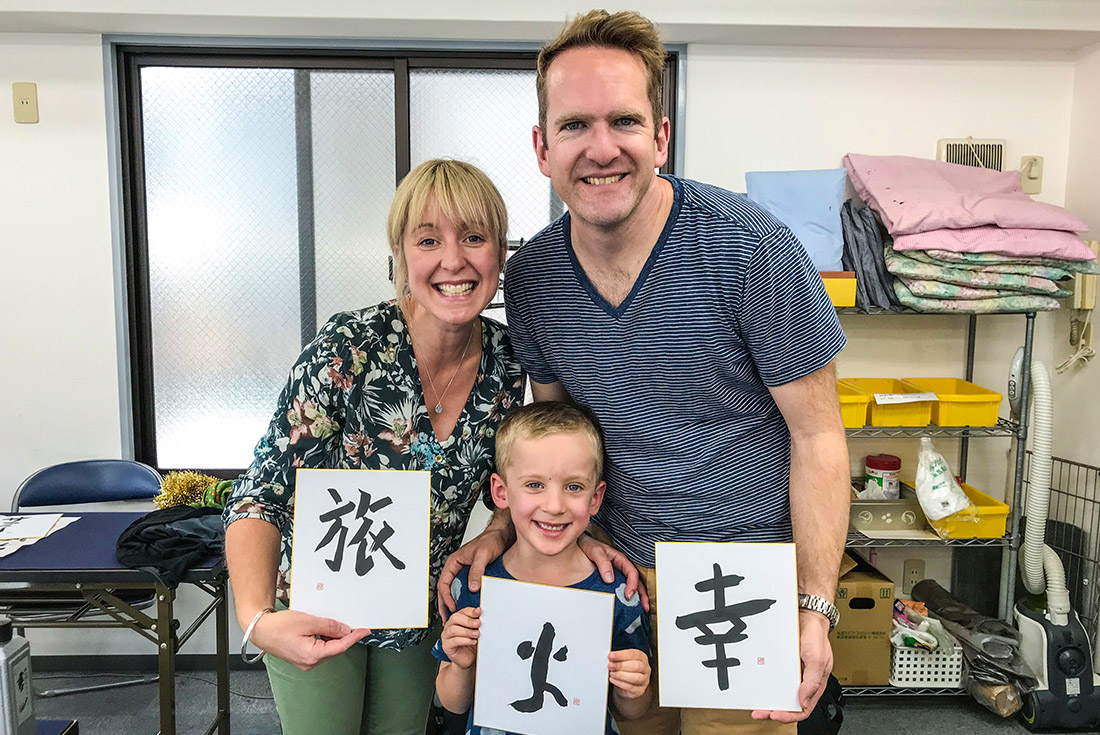
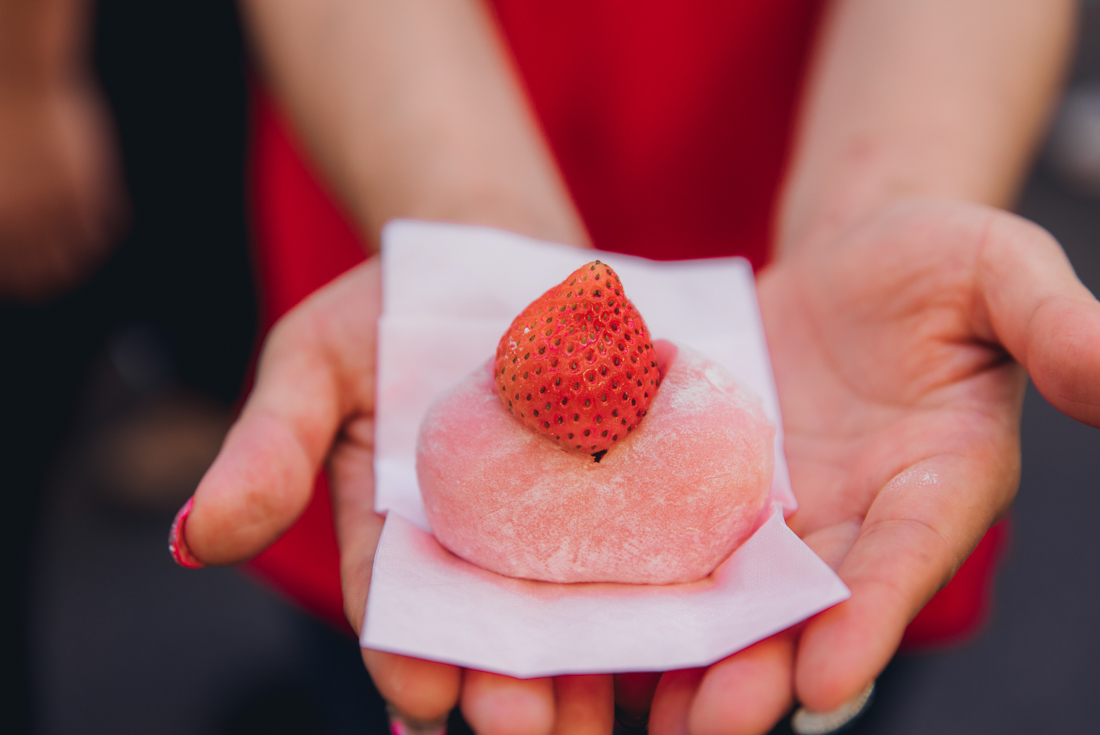
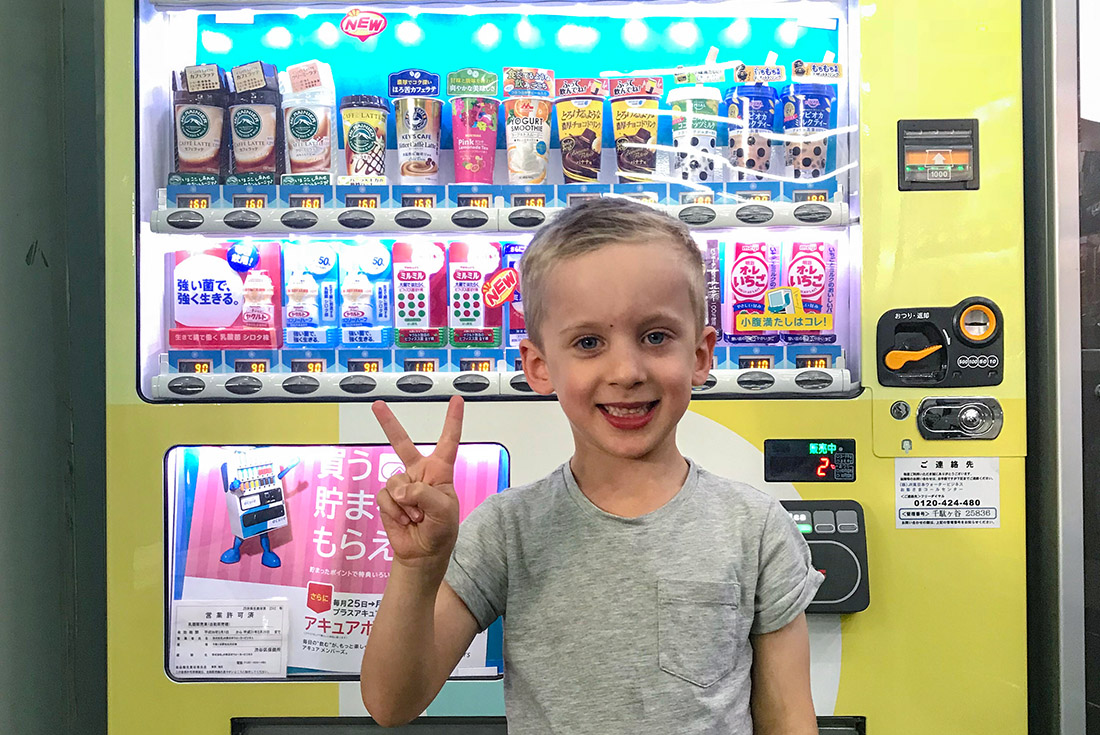
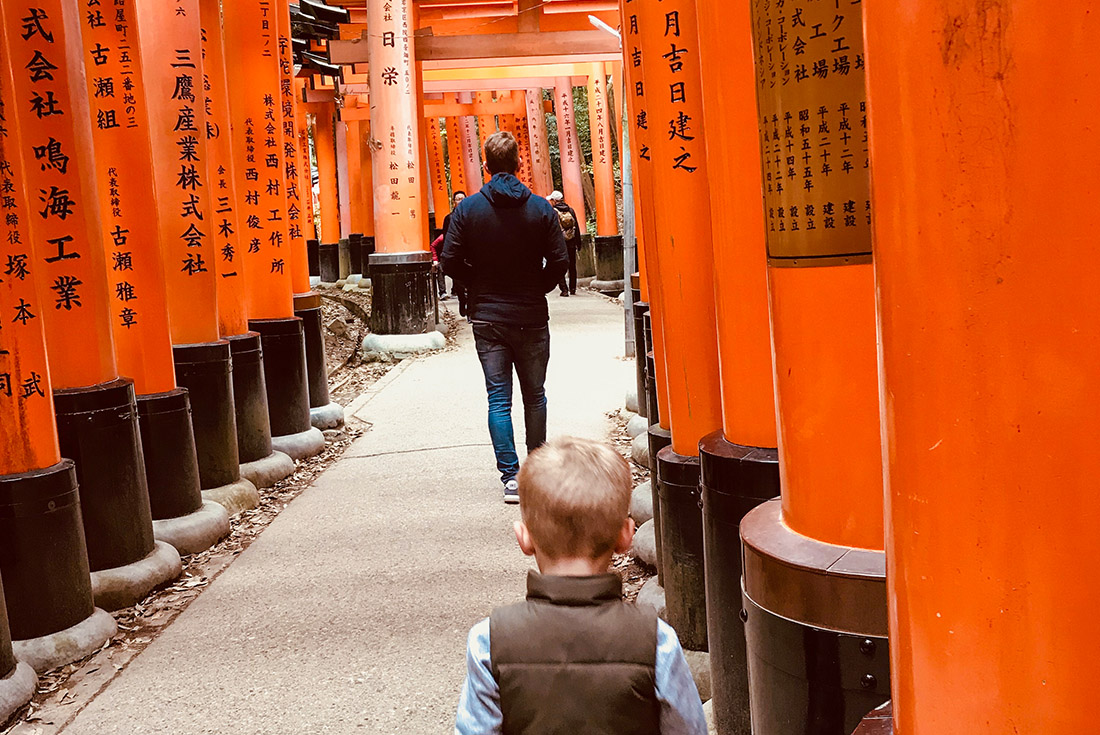
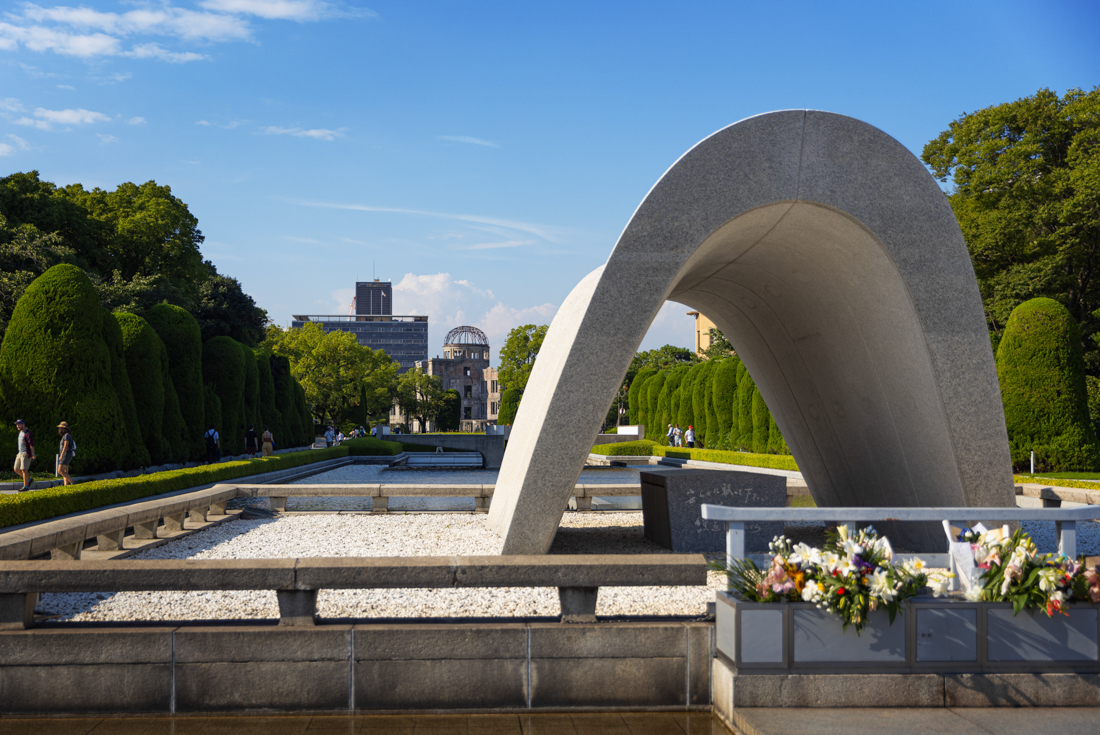
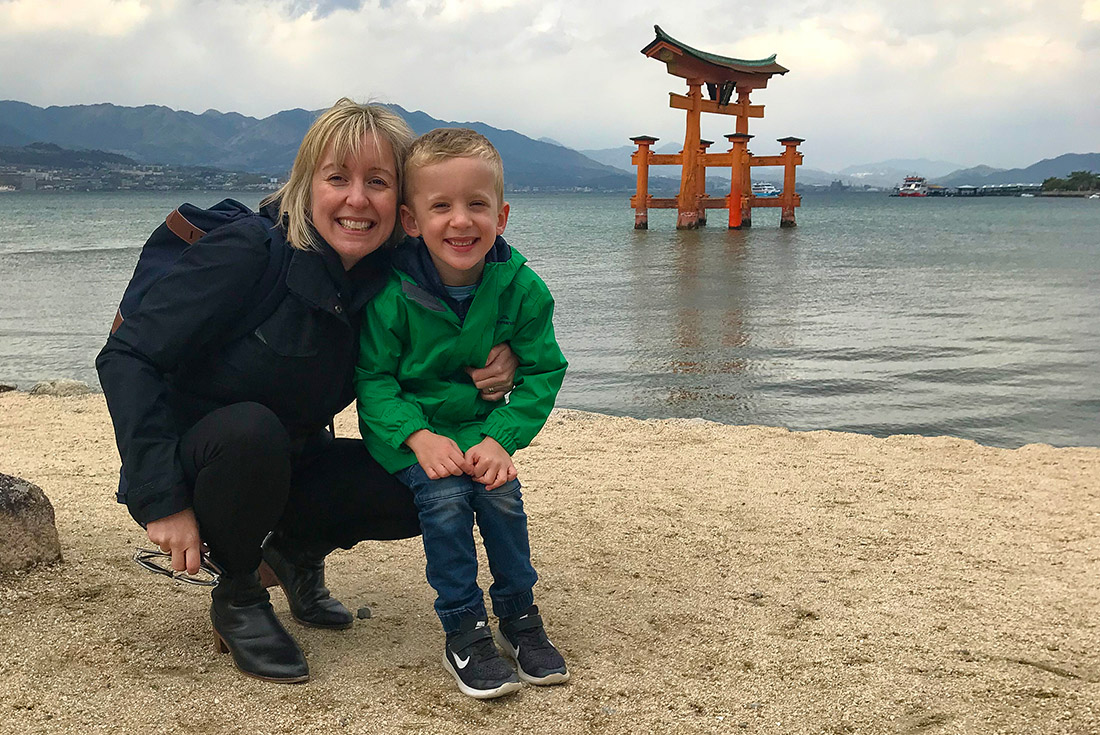
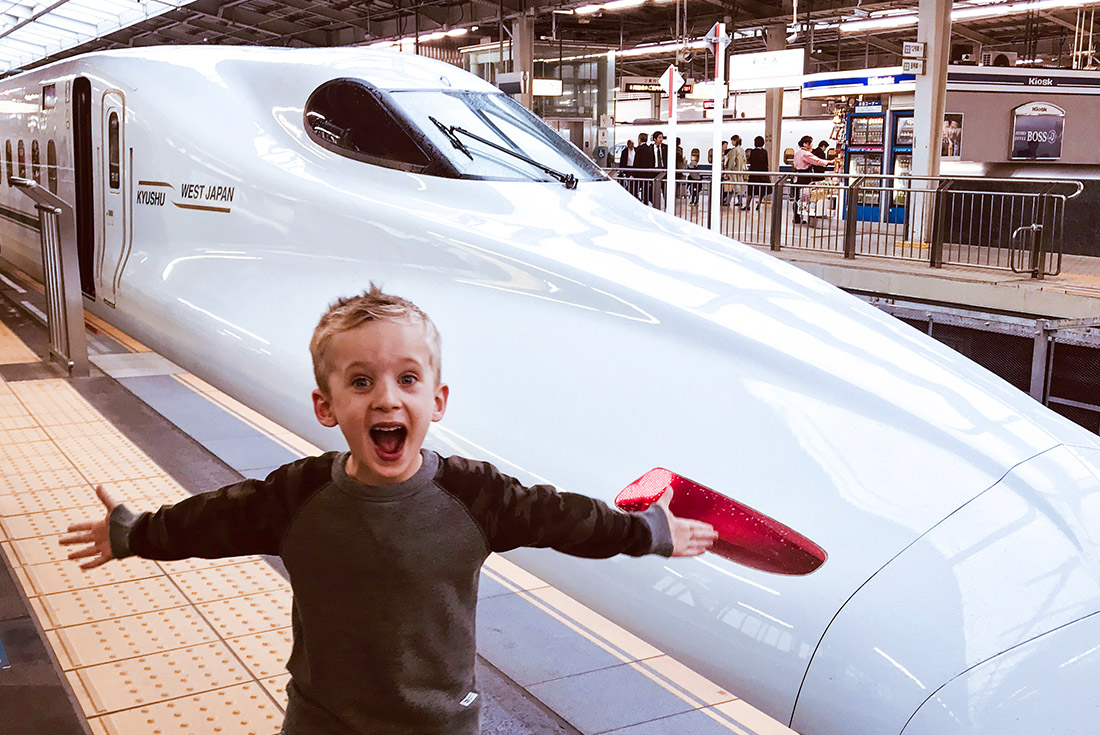

Tokyo - Sensoji Temple
Tokyo - Monjayaki Dinner on Boat
Tokyo – Harajuku walk
Tokyo - Japanese & Calligraphy lesson
Hakone - Lake Ashinoko boat cruise
Hakone - Cable car/Ropeway
Hakone – Karakuri Secret Box Museum
Hiroshima – Peace Park and A-Bomb Dome
Hiroshima - Miyajima Island
Himeji - Himeji Castle
Kyoto - Nishiki-Koji Market
Kyoto - Gion District walk
Kyoto - Fushimi Inari Shrine
Kyoto - Arashiyama sightseeing
Kyoto - Tenryuji Temple Gardens (additional JPY300 to visit the temple)
Kyoto - Hozu River boat ride
Try your hand at traditional calligraphy in Shinjuku, then learn to cook your own okonomiyaki on a relaxing boat cruise around Tokyo Bay – Tokyo really is fun for the whole family!
Explore Hakone by cable-car, pirate ship and with a peaceful walk around the lake – maybe even catch a glimpse of the iconic Mt Fuji on a clear day, before relaxing in the soothing waters of an onsen.
Visit Himeji Castle – Japan's most impressive samurai castle – then dive into Kyoto culture with a walk around the famous Goin district.
Learn about an important chapter of Japan’s history at the Hiroshima Peace Park, followed by a visit to the relaxing island of Miyajima where deer roam the streets.
Take a daytrip from Kyoto to Arashiyama and cruise along the Hozu River on a boat ride – this route along the river is over 400 years old and surrounded by lush rolling mountains – then, visit the bamboo forest.
Ryogoku View Hotel, 2-19-1 Ryogoku Sumida-ku 130-0026 Tokyo-to Japan , Tokyo, JAPAN, Phone: +81 3 3631 8111
Karasuma Kyoto Hotel, 600-8412 Karasuma-dori Shijogaru Shimogyo-ku, Kyoto-shi, Kyoto, 600-8412, JAPAN, Phone: +81 753710111
1. These trips are for adults and children travelling together and there must be at least one child under 18 with you.
2. Minimum age for children on this trip is 5 years old.
3. CHILD PRICE: From 30 October 2025, children aged 17 years and under at time of travel on this trip, are eligible to receive 20% off the full adult price, for all departures commencing on or after 1 January 2026.
4. A single supplement is available to book for adults who would like to confirm a single room for themselves. The single supplement applies to all nights of your trip and is subject to availability. Please speak to your booking agent for further information.
5. We recommend packing light and compact for rail travel in Japan or using luggage transfer services, which are available at an additional cost. Please review the Packing section of the Essential Trip Information for more details.
6. We are currently unable to offer airport transfers in Japan. Please refer to the Joining Point Instructions of the Essential Trip Information for our recommendations on arrival. Your leader will be able to advise the best way to reach the airport at the end of your trip.
While we always endeavour to provide the best possible holiday experience, due to the nature of travel and the areas we visit sometimes things can and do go wrong. Should any issue occur while you are on your trip, it is imperative that you discuss this with your group leader or local representative straight away so that they can do their best to rectify the problem and save any potential negative impact on the rest of your trip.
We recognise that there may be times when your group leader or local representative may not be able to resolve a situation to your satisfaction - if this is the case, please ask the group leader or local representative to speak to their direct manager.
You may also choose to provide details in your online feedback, which we ask you to complete within 30 days of the end of your trip. Please do be aware that it is very difficult for us to provide any practical help after the trip is completed, so informing us while still travelling will give us the opportunity to resolve the issue in real-time., For general contact details please use the following page: https://www.intrepidtravel.com/contact-us, In case of a genuine crisis or emergency, you can reach our local office on the numbers below:
, Available for phone call or WhatsApp call on +81 70 1771 5588
Japan is best explored on foot and by public transport. You’ll need to be fit enough to spend most of each day on your feet and able to handle your luggage as you navigate busy train stations. We recommend comfortable shoes and packing light., This trip includes staying at a ryokan (traditional inn) in Hakone, where you have the option to sleep on a futon on a tatami (mat floor) and take a traditional onsen bath. Western beds and bathrooms are also available., Room sizes in Japan may be smaller than you’re used to, and larger families may be provided two rooms due to limited availability of triple or quad share rooms.
Try your hand at traditional calligraphy in Shinjuku, then learn to cook your own okonomiyaki on a relaxing boat cruise around Tokyo Bay – Tokyo really is fun for the whole family!, Explore Hakone by cable-car, pirate ship and with a peaceful walk around the lake – maybe even catch a glimpse of the iconic Mt Fuji on a clear day, before relaxing in the soothing waters of an onsen., Visit Himeji Castle – Japan's most impressive samurai castle – then dive into Kyoto culture with a walk around the famous Goin district., Learn about an important chapter of Japan’s history at the Hiroshima Peace Park, followed by a visit to the relaxing island of Miyajima where deer roam the streets., Take a daytrip from Kyoto to Arashiyama and cruise along the Hozu River on a boat ride – this route along the river is over 400 years old and surrounded by lush rolling mountains – then, visit the bamboo forest.
All Intrepid Family trips are accompanied by one of our group leaders. The aim of the group leader is to assist your family to take the hassle out of your travels and help you have the best trip possible. Your leader will provide information on the places you are travelling through, offer suggestions for fun things to do and see - for both kids and parents, recommend great local eating venues that will even get the kids trying new things, and introduce you to our local friends. While not being guides in the traditional sense you can expect them to have a broad general knowledge of the countries visited on the trip, including historical, cultural, religious and social aspects.
Our leaders are not babysitters on this trip - we leave that to you (the experts), but they will make sure that group members of all ages are able to explore their destination safely and with as much fun as possible. Our group leaders are not responsible for looking after children at any time and children must be accompanied by a parent or guardian at all times throughout this itinerary.
Many national governments provide a regularly updated advice service on safety issues involved with international travel. We recommend that you check your government's advice for their latest travel information before departure and ensure that your travel insurance covers you for all areas your itinerary covers. Please refer to our website's safety page for links to major travel advisories and updates on safety issues affecting our trip.
We strongly recommend the use of a neck wallet or money belt while travelling, for the safe-keeping of your passport, air tickets, cash and other valuable items. Leave your valuable jewellery at home - you won't need it while travelling. Many of our hotels have safety deposit boxes, which is the most secure way of storing your valuables. A lock is recommended for securing your luggage. Though obvious please don't allow your children to carry their own passports while on tour.
Your leader will accompany you on all included activities, however during your trip you'll have some free time to pursue your own interests, relax and take it easy or explore at your leisure. While your leader will assist you with the available options in a given location, please note that any optional activities you undertake are not part of your Intrepid itinerary, and Intrepid makes no representations about the safety of the activity or the standard of the operators running them. Please use your own good judgement when selecting an activity in your free time. Please also note that your Leader has the authority to amend or cancel any part of the trip itinerary if it's deemed necessary due to safety concerns.
For more details on the type of conditions and safety standards you can expect on your trip, please refer to Intrepid's operational safety policy on our website. We recommend that you take a moment to read through this information before travelling, and would appreciate any feedback on how well it's being implemented in the field:
http://www.intrepidtravel.com/contact-us/safety
FIRE PRECAUTIONS:
Please be aware that local laws governing tourism facilities in this region differ from those in your home country and not all the accommodation which we use has a fire exit, fire extinguishers or smoke alarms.
TRAFFIC AND DRIVING ON THE OTHER SIDE OF THE ROAD:
Depending on where you come from please note that drivers in this part of the world may drive on the opposite side of the road from what you are used to. Look both ways before crossing any road. Traffic can be a little more chaotic than you might be used to at home. Be aware!
SEAT BELTS:
Please be aware that local laws governing transportation safety may differ from those in your home country and not all the transport which we use is able to provide seat belts. When travelling in private mini vans or trucks all children (and adults) must wear a seat belt. No children are allowed to sit in the front seat of a vehicle.
PETTY THEFT AND PERSONAL SAFETY:
While travelling there is always the risk of pick-pocketing and petty theft, particularly in the more touristy cities. We recommend that you exercise caution when walking alone at night and encourage you to walk together and only on main, well-lit thoroughfares. Be particularly vigilant on public transport. Simple measures like carrying your day pack on your front, not hanging your bag over the back of your chair or on the floor and wearing a money belt will reduce any chance that your valuables should go missing.
LIFE JACKETS:
While life jackets are generally available on water craft, there may be occasions where they are not provided and child size life jackets are not always readily available. If travelling with children and this safety issue concerns you we will be able to advise alternative methods of transport (where available) for you to travel to the next destination. You can choose to travel independently for this leg of the journey. This would be at your own expense.
WATER SAFETY:
Please take care when taking part in any activities in the ocean, river or open water with your children, where waves and currents can be unpredictable. It's expected that anyone taking part in water activities is able to swim and have experience in open water. All swimmers should seek local advice before entering the water.
PASSPORT
You’ll need a valid passport to travel internationally and most countries require your passport to have a minimum of 6 months validity, so remember to check the expiry date.
We need your passport information to get everything ready for your trip so it’s important that the information on your booking matches your passport exactly. Please take care to provide the correct details. We recommend carrying a copy of the photo page of your passport while travelling and leaving a copy at home with family or friends.
VISAS & ENTRY REQUIREMENTS
Many countries require a visa and obtaining the correct visa for your trip and any countries you may transit through is your responsibility. We recommend you check your visa requirements as soon as you have booked your trip. This will ensure you have time to prepare your documents and for your visa application to be processed. You can check the entry requirements for your nationality on your government's foreign travel advisories, consular websites or on our page here: www.intrepidtravel.com/visa-entry-requirements
Information not available.
Validity: 01 Jan 2026 to 31 Dec 2026
GENERAL HEALTH
All travellers need to be in good physical health in order to participate fully on this trip. For the safety and wellbeing of yourself and others, if you are unwell prior to travelling, please stay at home and contact us to make alternative arrangements.
When selecting your trip please make sure you have read through the itinerary carefully and assess your ability to manage and enjoy our style of travel. Please note that if in the assessment of our group leader or local representative a traveller is unable to complete the itinerary without undue risk to themselves and/or the rest of the group, we reserve the right to exclude them from all or part of a trip without refund.
You should consult your doctor for up-to-date medical travel information or for any necessary vaccinations before departure. We recommend that you carry a first aid kit as well as any personal medical requirements in their original packaging as they may not easily be obtained while travelling. If you are carrying medication, ensure you check your government's foreign travel advice for any local restrictions or requirements.
While travelling with us you and your family experience the vast array of wonderful food available in the world. Your group leader will be able to suggest restaurants to try during your trip. Please ensure you tell them of any dietary requirements you and your family may have. We know children can be fussy eaters at times so we do recommend you bring any snacks from home to have throughout the trip.
To give you the maximum flexibility in deciding where, what and with whom to eat, generally not all meals are included in the trip price. This also gives you more budgeting flexibility. As a rule our groups tend to eat together to enable you and your family to taste a larger variety of dishes and enjoy each other's company. There's no obligation to do this though., Most of our families find the diversity of Japanese food surprising. Trying different foods is great fun and an opportunity to understand a little about Japanese culture. Some of the different meals you can enjoy include: sushi, soba noodles, ramen noodles, monjaki and okonomiyaki (savoury pancakes), takoyaki (ball-shaped Japanese fried snack – a bit like the Japanese equivalent of fish fingers), yakitori (skewered chicken). There are also great treats to try including green tea kit kats and ice-creams, pounded-rice desserts such as mochi and dango, and lots of types of sweet red bean cakes. Yum! For anyone in search of food for a picnic the majority of department stores have food halls (depachika) with an eyepopping selection of different types of food. Also, convenience stores (combini) are around nearly every corner and have snacks to tempt the fussiest eater. If in doubt and needing a little taste from home the Japanese chain Moss Burgers have great hamburgers, and in the major cities there are more western options such as pasta and pizza as well as great bakeries.
Breakfast in Japan
Some of our families are surprised by the traditional Japanese breakfast foods and the western variations that our accommodation provides. Rice or noodles with fish or meat are common breakfast foods in Japan. Typical western foods available generally include toast, eggs, tea and coffee, and sometimes cereals.
SPENDING MONEY
When it comes to spending money on the trip, every traveller is a little different. You know your spending habits better than we do, so please budget an appropriate amount for things like optional meals, drinks, shopping, optional activities, and laundry. Make sure you have read the itinerary and inclusions thoroughly so you know what is included in the trip price and what you may need to pay for while travelling. , JAPAN
The local currency in Japan is the Japanese Yen (JPY). Cash is still the most common form of payment in Japan. ATMs are commonplace, so obtaining cash is easy. Credit cards are generally accepted at departments stores and large restaurants., TIPPING
Tipping can be an appropriate way to recognise great service when travelling. While it may not be customary in your home country, it is an entrenched feature of the tourism industry across many of our destinations and is greatly appreciated by the people who take care of you during your travels. It is always best to avoid tipping with coins, very small denomination notes, or dirty and ripped notes, as this can be regarded as an insult rather than the goodwill gesture it is intended to be., YOUR GROUP LEADER OR LOCAL REPRESENTATIVE
Tipping your group leader or local representative is highly appreciated if you feel they’ve provided outstanding services throughout your trip. The amount is entirely a personal preference; however, as a guideline, the recommended amount is 4-7 USD or EUR per traveller per day (in a currency relevant to your destination). Of course, you are free to tip more or less as you see fit, depending on your perception of service quality and the length and involvement of your group leader or local representative on your trip., CONTINGENCY FUNDS
We try to plan for every eventuality, but there are still some things beyond our control. We reserve the right to change an itinerary after departure due to local circumstances or a Force Majeure Event. In such emergency circumstances, the additional cost of any necessary itinerary alterations will be covered by you. Please note we are not responsible for any incidental expenses that may be incurred as a result of the change of itineraries including but not limited to visas, vaccinations or non-refundable flights. Make sure you have access to an extra US$500 for emergencies (e.g. severe weather, natural disasters, civil unrest) or other events that result in unavoidable changes to the itinerary (e.g. transport strikes or cancellations, airport closures). Sometimes these things necessitate last-minute changes to enable our trips to continue to run, and as a result, there may be some extra costs involved. The recommended amount is listed in USD for the relatability of universal travellers, however, local currency may be needed once in the country to cover these costs.
LUGGAGE IN JAPAN
On this trip you will need to carry your own luggage for up to 30 minutes at a time. Train stations are quite complex and usually require climbing a lot of stairs, especially when doing a quick transfer from train to train. Elevators aren't always available and cannot accommodate many people at a time, so if you bring a suitcase, please ensure you are able to lift and carry it up and down stairs yourself without difficulty. Our ryokans allow suitcases, but you'll need to carry it onto the tatami floor in the room, instead of wheeling it. A backpack is often preferred by travellers for these reasons.
We recommend that you keep your main luggage weight around 15kg and certainly no more than 20kg.
LUGGAGE SIZE RESTRICTIONS ON JAPANESE TRAINS
Luggage allowances for train travel are calculated by adding the length, width and height together. We recommend your main piece of luggage does not exceed 159cm.
Luggage between 160cm and 250cm requires pre-booking additional luggage space for an additional fee. This can be difficult to secure given how busy Japan's rail system is. Luggage over 251 cm will NOT be permitted on Shinkansen trains.
If you have oversize luggage you will need to use luggage forwarding services. Additional charges will apply. Please speak to your leader if you need to utilise this service.
Japanese trains don’t have large luggage racks for big suitcases so it's best to pack as light and small as possible so that you are not blocking aisles or taking up extra seats.
DAY PACK
A day pack for carrying essentials when exploring destinations, as well as for any shorter overnight stays, will be useful.
SEASONAL CLOTHING
Weather in Japan varies greatly between summer and winter so be sure to check whether you’ll need a beanie and thermals or light cotton layers during your visit.
PACKING LIST
Below is a link to our ultimate packing list, a guide to get you started:, https://www.intrepidtravel.com/packing-list, WATER BOTTLE
Please bring your own water bottle to refill. Although it can be difficult to avoid bottled water when travelling, please use the water dispensers which are provided on some of our vehicles and at some of our accommodation. When unable to avoid bottled water, it is better to buy the largest available and distribute it into your smaller bottle for the day. Some travellers like to bring a bottle with its own filtration system or water purification tablets. If you are walking or trekking as part of your trip, you will need to carry at least 2 litres of water with you.
PEAK TRAVEL TIMES
Please be aware that while travelling during major national holidays (late Apr to early May) and peak seasons in Japan (Apr-May/Sep–Oct) are fascinating and exciting times to travel, there are also some downsides. There will be huge crowds at most tourist attractions and on all public transport. It's common for there to be difficulties in securing train tickets at our usual preferred times, hotels become overbooked, traffic jams and changes to the itinerary without prior notice can be necessary. If you decide to travel during peak periods come with a sense of adventure and flexibility and we are sure that your experience will still be rewarding and memorable.
Information not available.
GENERAL ROOMING CONFIGURATIONS:
Family of two - All family groupings of two will be put into a twin room.
Family of three - Wherever possible we will put you in a triple room. Please be aware that in a handful of places triple rooms are in short supply. This means that, in practice, a triple room will often simply be a twin room with a mattress on the floor or a further bed squashed in. Where it is impossible to provide a triple room, you will have to decide which of your party takes the single room.
Family of four or more - You will most likely stay in two twin rooms. If and wherever possible we will aim put you in a quadruple room. Whilst we will do our very best to ensure that families are roomed close together (in some cases, we can arrange adjoining rooms), we can’t guarantee this. Most family holidays occur during peak season and we sometimes have little to no control over where you will be put. You need to come prepared for this., RYOKANS & MINSHUKUS
Japanese-style accommodation - ryokans or minshukus (traditional inn/guesthouse) involve sleeping on futons or matresses on tatami mat floors, with bedding often packed away during the day. Attached bathrooms/toilets will usually be very small and many will only have shared bathing facilities with certain hours, or times available for booking at reception. Your leader will explain etiquette involved in using the shared facilities. As this style of accommodation will often not have furniture (ie. chairs or beds) in the rooms, please consider choosing a different trip style in Japan if you have difficulty getting up from the floor or have knee, hip or back issues. Some establishments may have a curfew when travellers need to be back in the accommodation - this is usually around midnight. Please also be aware that you would normally be required to change to slippers when entering into your room in such properties. Extra fees will be charged if dirty marks are left on their beddings or towels that require professional cleaning. Some of such properties will only give 1 key for each room so you can leave the key at the reception so that you and your roommate won't have to conform to the same schedule when you are out exploring.
Information not available.
Travel insurance is compulsory on all our trips for those travelling internationally. We require that, at a minimum, you are covered for medical expenses, including emergency repatriation. If you are travelling within your home country or region, please confirm before travel that you are entitled to access the public medical system easily should an accident occur. We strongly recommend all travellers have a policy that also covers personal liability, cancellation, curtailment and loss of luggage or personal effects. For international trips, you will not be permitted to join the group until evidence of travel insurance and the insurance company's 24-hour emergency contact number has been sighted by your group leader or local representative.
If you have credit card insurance, your group leader or local representative will require details of the participating insurer/underwriter, the level of coverage, policy number, and emergency contact number, rather than the bank's name and your credit card details. Please contact your bank for these details prior to arriving in-country.
For travellers who reside within the European Union, Switzerland or the USA, the requirement to purchase travel insurance cannot be compulsory. However, the purchase of travel insurance is still highly recommended, and each country you visit may have its own specific entry requirements. For example, some mandate travel health insurance for all foreign travellers, regardless of their nationality. Travellers from the European Union, Switzerland or the USA who decline travel insurance when travelling outside their home region must sign a Travel Insurance Waiver Form at the Group Meeting, recognizing personal responsibility for emergency medical and repatriation costs should they arise.
For assistance with travel insurance or other services, please visit the link below:
, https://www.intrepidtravel.com/booking-resources/our-services
As you and your family travel on a group trip you will be exposed to all the pleasures and maybe some of the frustrations of travelling in a group. Your fellow families will probably come from all corners of the world and likely a range of age groups too (for both parents and children). We ask you to be understanding of the various needs and preferences of your group - patience with your fellow families is sometimes required for the benefit of everyone's travel experience. Remember too that you and your family have responsibilities to the group. If you are requested to be at a place at a certain time, ensure that you don't keep the rest of the group waiting. We have found time and time again that the very best trips we operate are those where the dynamics within the group work well - this takes just a little effort on your part. Due to privacy reasons we are unable to provide you with contact details and any personal information about your fellow families booked on your trip prior to departure.
ITINERARY CHANGES
Our itineraries are updated regularly throughout the year based on customer feedback and to reflect the current situation in each destination. The information included in this Essential Trip Information may therefore differ from when you first booked your trip. It's important that you review this information prior to travel so that you have the latest updates. Due to weather, local conditions, transport schedules, public holidays, political unrest or other factors, further changes may be necessary to your itinerary once in-country. Your group leader or local representative will keep you up to date with any such changes once your trip is underway and has the authority to amend or cancel any part of the trip itinerary if deemed necessary due to safety concerns.
, OPTIONAL ACTIVITIES
A selection of optional activities that have been popular with past travellers are listed in the day-to-day itinerary. This isn't an exhaustive list and should be used as a guide only for some of what might be available. Prices are approximate, are for entrance fees only, and don’t include transport to and from the sites or local guides unless indicated. All activities are subject to availability, and maybe on a join-in basis. It may not be possible to do all the activities listed in the time available at each destination, so some pre-planning for what you are most interested in is advised. When it's recommended that travellers pre-book these activities, look for a note in the Special Information section of the day-to-day itinerary. For most, they can either be organised independently on the day, or let your group leader or local representative know you are interested at the Welcome Meeting and they can assist.
Where activities are considered medium or high risk, we work with operators whose safety and credentials we have sighted and assessed. Although it is possible that you may find the same activity cheaper with another operator on the ground, we cannot vouch for the safety or quality of that operator. Medium and high-risk activities not listed above have not been assessed by us and as such our staff and group leader or local representative are unable to assist you with organising these activities. Activities that contravene our Responsible Travel policies are also not listed. Please remember that the decision to partake in any activity not listed is at your own discretion and risk.